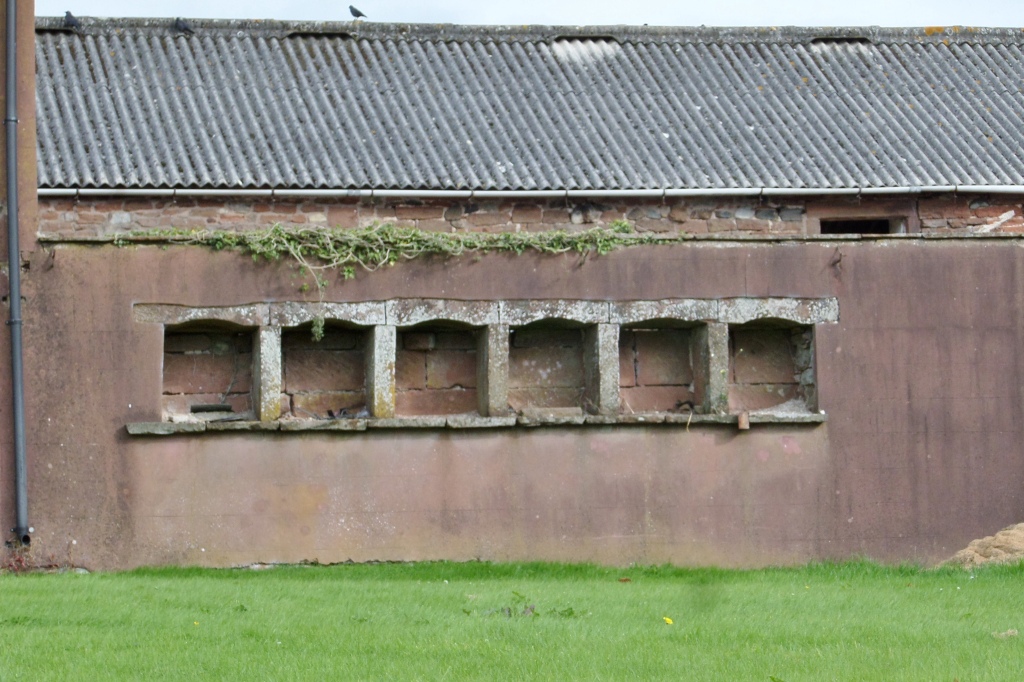
Bee holes are essentially holes built into a south-facing wall for placing bee-hives into, they usually date from before the 19th century, when modern, wooden bee-hives were made commercially available.
Normally built into dry-stone walls but occasionally designed into brick walls, bee boles are almost always situated in a south-facing wall and usually accompanied a kitchen-garden or orchard, this was to encourage pollination of fruit and vegetables therefore increasing the crop.
Around the Northwest there are several places where they have survived, Hammerton hall near Slaidburn has two built into a south-east facing garden wall, Blands farm near Wennington has 12, and Eldroth hall at Lawkland has 8 built alongside an orchard which were thought to have been constructed around 1660.

(Plucas58)
Pollinator and Produce
The mutual connection between pollinator and produce was, until relatively recently, universally understood, even the layman knew that more fruit would come from a bush visited by bees, and therefore more honey would be made by said bees.
So naturally even the very smallest of smallholdings would endeavour to have a beehive nearby, and when a hall, abbey, farm or other such steading was constructed careful consideration was put into the placing of a bee-bole.

(Rosser1954)
Situating a bee bole
In order for bees to be fit-and-ready for a day’s work it helps if they are warmed up, so beekeepers place their hives facing south or south-east in order to catch the morning sun, bees are fragile creatures too so it helps if their home is not exposed to prevailing winds and rains. A bee bole provides a roof and shelter from these elements but also holds the sun’s warmth in its stone, releasing it overnight much like a storage heater.
To make things easier for the keeper the base of the bee-boles would usually be about three feet from the ground, but the hives placed in them would have been rather different to the bee-hives you might see today, they were built from straw for one thing and called skeps, and usually a round or cylindrical shape.

(Phillip Halling)
Skeps
Skeps are still in use and you can build one yourself, they have several advantages over a traditional bee hive as well, being disposable, portable and easily made.
Creative garden and landscape designers have started building bee boles into modern gardens again though as people have remembered and realised the bees importance as a pollinator and organic horticulture practices have become more mainstream, this stone wall that is being constructed at Dolmelynllyn in Wales must have several dozen!

(Michael Reeve)
Build your own Bole
If you fancy making your own skep to place in a wall for your garden this book comes highly recommended by beekeepers and there are still many drystone wallers in business who can make you a bee bole, such as this waller who repairs walls for the duchy estate, or you could have a go at learning to build one yourself! Bees are enormously interesting insects to watch after all and your garden will benefit too!
A B-H
I must have a go at this. It will perhaps provide them with an alternative to colonising my bird boxes, before the birds realise they’re there.
LikeLiked by 1 person
We keep getting bumblebees in one of our boxes, they’ve ignored the bee hotel thing i got for them!
LikeLiked by 1 person
We built a copy of a bee bole in our garden modelled after one at Brown Hills in Gisburn Forest. It is about 50 feet from the site of one originally in the garden of a cottage which was demolished in the 1970s to build Slaidburn Doctor’s Surgery.
There are also bee boles in the yard at Woodhouse Farm on the Slaidburn – Bentham road.
LikeLiked by 1 person